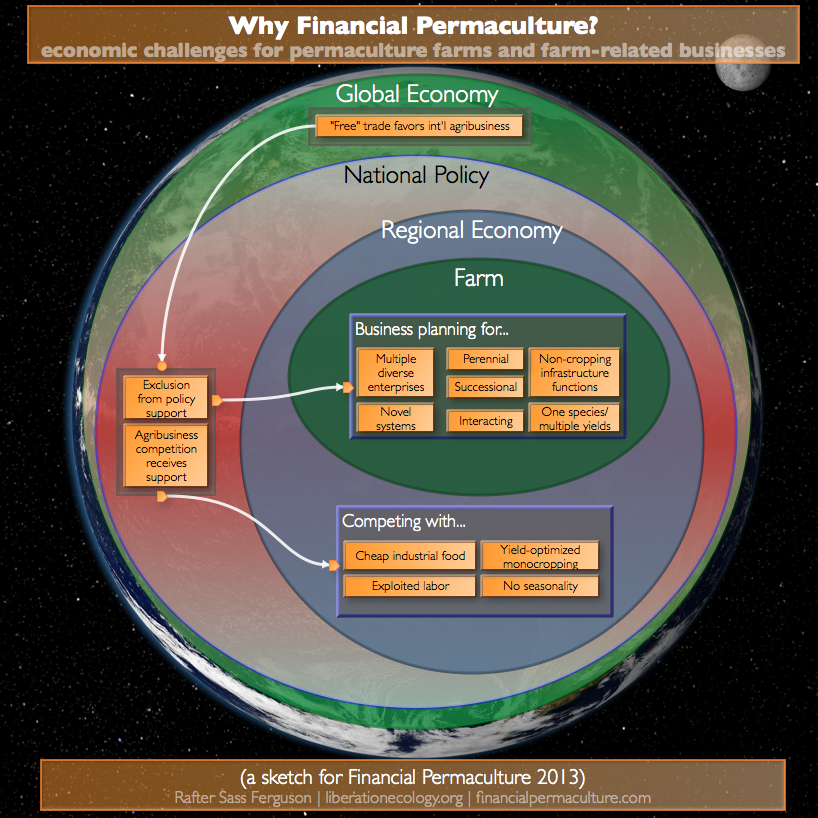Permaculturists face a wicked contradiction. We want to create, and support the creation of, businesses and organizations that point the way toward a new way of doing things. If we want to claim that permaculture is ‘design that meets human needs while increasing ecosystem health,’ then we need to be able to demonstrate how the enterprises we design are meeting this description. Otherwise, our ethics aren’t meaningful, and the claims we make about the value of permaculture aren’t credible.
The trick is that these enterprises also have to thrive right now, under industrial capitalism. If no one but the independently wealthy can use permaculture systems to both survive the current society and transition to whatever comes next, then permaculture isn’t much help at all. I don’t want to make lifeboats and pleasure gardens for the rich, and I don’t want to have to wait until after the apocolypse for permaculture to make good economic sense.
So there is our contradiction: we have to make truly regenerative enterprises that can succeed right now, enmeshed in a grossly degenerative socio-economic system. We have to make a future that can survive the present. I’m grateful that the Financial Permaculture series is helping address this challenge directly and with great intelligence – which is why I’m teaching at the upcoming course for expenses only.
The permaculture literature mostly deals with the tools and the opportunities available – so I’m going to keep focussing on the challenges. With this post I hope to frame some questions, and generate discussion, about the challenges we face – particularly the two major challenges that I see for permaculture farms (and for the many who work and farm permaculture-style without having been influenced by permaculture proper).
- At the scale of the farm itself, very few planning tools exist to support the level of diversification that permaculture farms will usually show. Even fewer tools exist to support successional budgeting and planning for perennial systems – the yields of which will change over time. Permaculturists who integrate animal, perennial, and annual production face a significant challenge in figuring out how to integrate the tools that are available – or create their own – so that they can do the necessary planning to ensure the viability of their business.
- Beyond the farm boundaries, permaculturists find themselves in competition with cheap industrial food, whose price is subsisidized by cheap oil (and the wars that secure it), pollution, exploited labor, and tax dollars (via government subsidies). We have the local and slow food movements to thank for a growing base of educated consumers who will pay a ‘premium’ (ha!) for food whose price isn’t kept artificially low by degenerative practices – but these niche markets don’t exist everywhere, and they won’t get us all the way to where we need to go.
So how do we adapt and combine existing farm business planning tools for permaculture systems? How do we adapt and combine progressive business models that will permit regenerative enterprisees to thrive in the current system? What have you seen work, or fail?
The post Toward Financial Permaculture: New Farms in the Old System appeared first on Liberation Ecology.



















